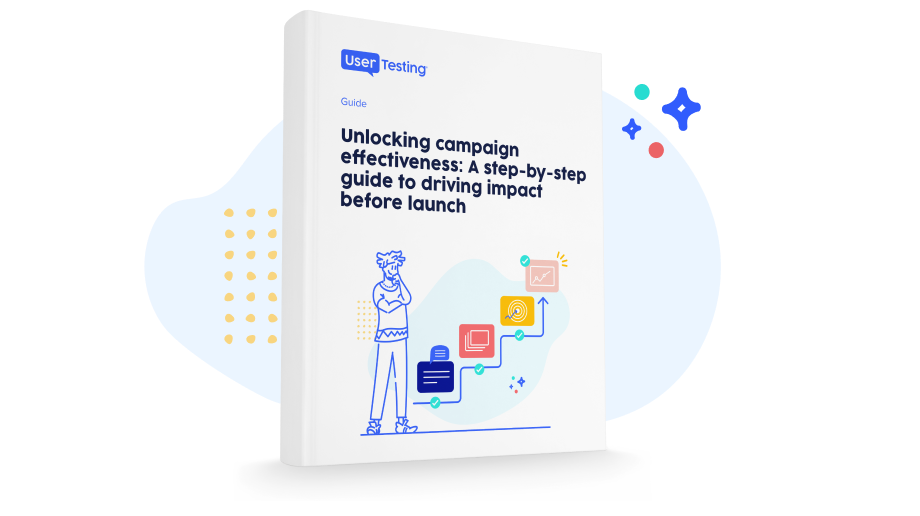
How to test your marketing campaign concepts

A campaign might look great on paper, but how will real customers react? Marketers often rely on past performance data or internal feedback to predict success, but those methods can overlook how people perceive and engage with the campaign in real time. By testing campaign concepts early with real customers, marketers can:
- Validate creative direction: See how audiences interpret messaging, visuals, and brand positioning
- Identify potential confusion: Catch unclear or misleading messaging before launch
- Optimize engagement: Ensure the campaign grabs attention and drives action
- Avoid costly missteps: Reduce the risk of launching a campaign that doesn’t connect with its audience
What is campaign concept testing?
Campaign concept testing helps marketers understand the why behind audience reactions. Unlike A/B testing or post-launch analytics, which provide performance data, qualitative testing allows marketers to hear directly from customers about what resonates and doesn’t. Testing campaign concepts enables marketers to:
- Show participants early versions of ads, email copy, landing pages, or social media content
- Gather real-time feedback on first impressions, emotional responses, and clarity
- Identify patterns in how different audience segments react to campaign elements
What concepts marketers can test before launching a campaign
Messaging and positioning
Marketing messages should be clear, persuasive, and aligned with audience expectations. By testing headlines, taglines, and key value propositions, marketers can refine messaging to ensure:
- Clarity: Is the message easy to understand?
- Relevance: Does it address the audience’s needs and interests?
- Emotional impact: Does it resonate and inspire action?
For example, if a tech brand is launching a new product, testing different messaging approaches can reveal whether customers respond better to a focus on innovation, ease of use, or cost savings.
Visual and creative elements
A campaign’s success often depends on its visuals, but what works in a design review might not translate well to customers. Testing elements like ad creatives, social media graphics, and email layouts can help marketers:
- Ensure imagery aligns with brand perception
- Test different color schemes, layouts, and fonts
- Identify whether visuals evoke the intended emotions
Calls to action (CTAs)
Even a small change in a CTA can impact conversion rates. Testing different versions—such as “Get started” vs. “Try it free today”—can show which ones drive more engagement.
Channel-specific content
Campaign performance can vary depending on where it’s running. What works for a social media ad may not be as effective in an email or landing page. Testing how content resonates across different platforms helps marketers tailor their approach for each channel.
How to run a marketing campaign concept test
- Define your objective: Identify what you want to learn, such as how customers perceive a new ad concept or whether messaging is clear
- Select your target audience: Ensure you’re testing with people who match your ideal customer profile
- Create a test plan: Decide whether you’ll show static images, interactive prototypes, or full campaign mockups.
- Gather real user feedback: Use video-based qualitative testing to capture first impressions and in-depth reactions
- Analyze and refine: Look for patterns in responses, identify areas for improvement, and iterate before launch
Make every marketing campaign more impactful
Marketing teams don’t need to guess how an audience will respond to a campaign—they can test and refine concepts before launch. By leveraging qualitative insights, marketers can create clearer, more engaging, and more effective campaigns from day one.

Improve campaign effectiveness
Get this step-by-step framework for optimizing messaging, creative, and targeting before launching campaigns.





